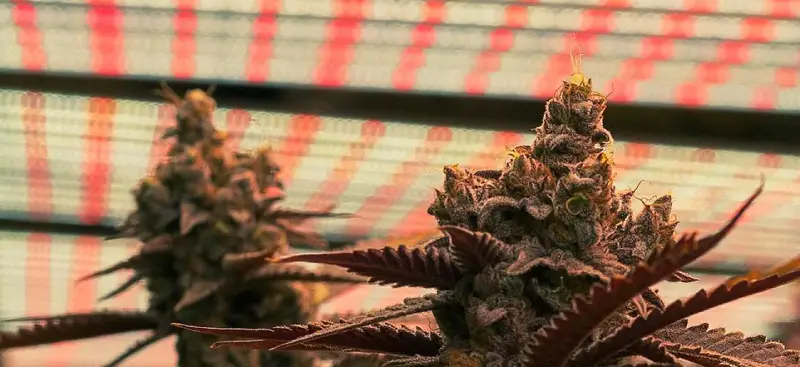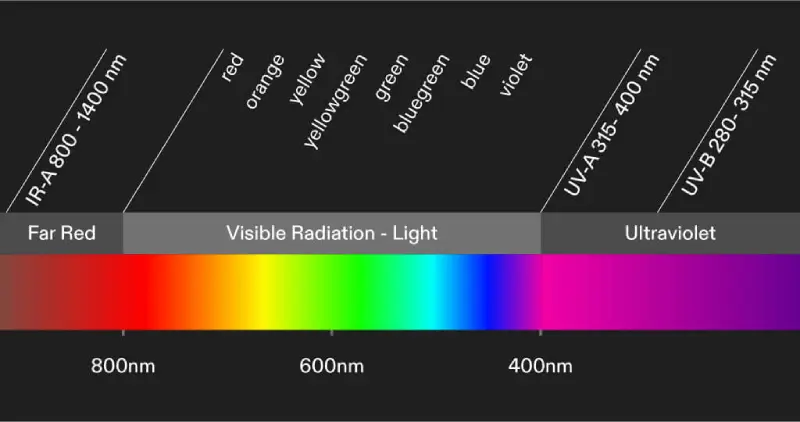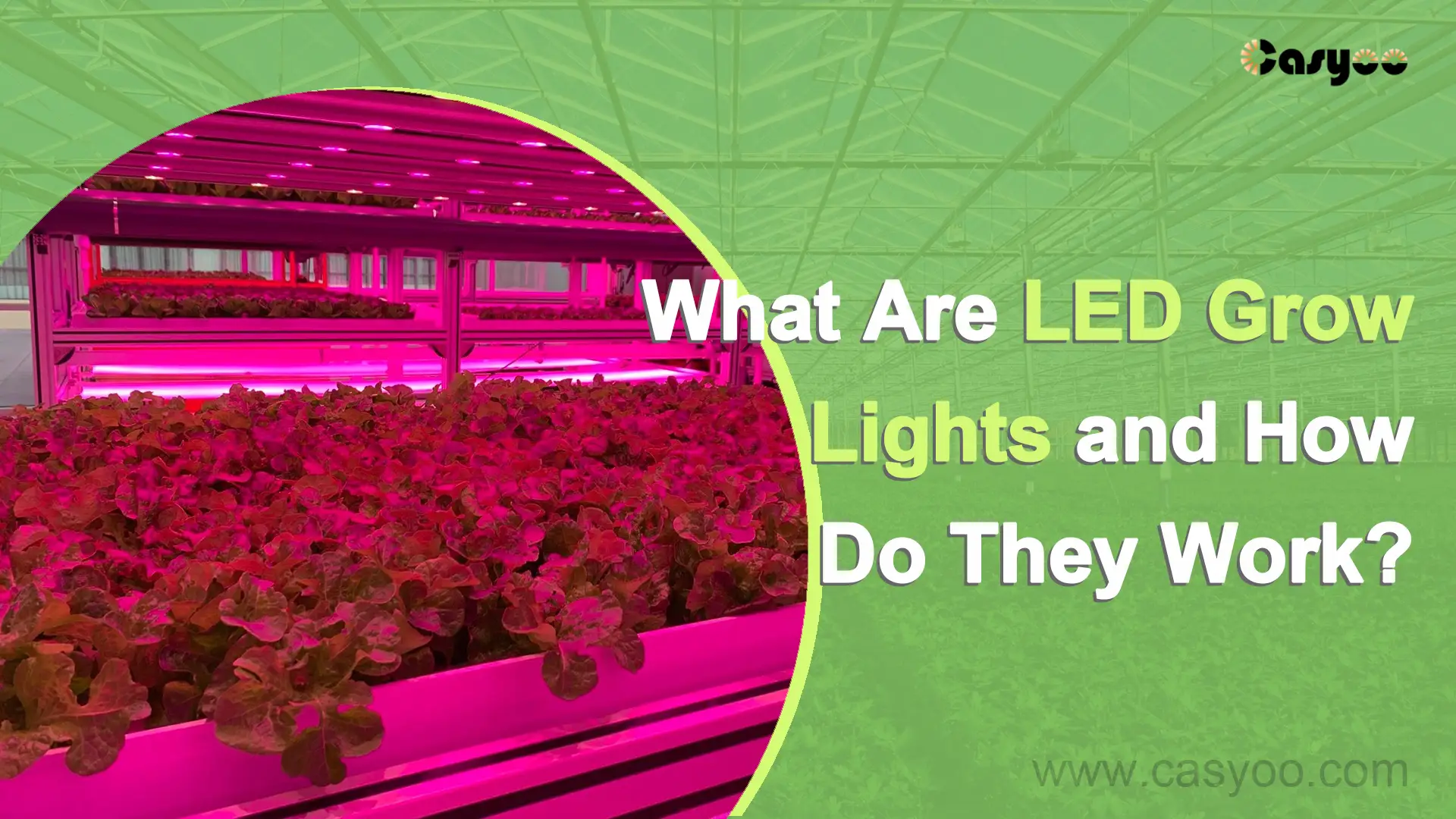If you want to set up your own indoor garden, the foremost thing you need is an LED grow light! So what is an LED grow light and what is its working principle? Let’s dive into the world of LED grow lights with this comprehensive LED grow lights guide!
What Are LED Grow Lights?

LED grow lighting is the most energy-efficient solution for indoor plant lighting available on the market. This amazing technological achievement is employed in some of the most advanced commercial growing and hobby gardens.
LED lights use very little electricity and produce very little heat. They are very efficient since LED grow lights transform almost a’ll of the consumed electricity into growth-targeted light energy. This is how an LED grow light can outperform HPS lights in terms of yield and energy consumption.
LED grow lights emit a sun-like spectrum. This light produces certain light spectrums, mainly red and blue for your plant growth. Depending on their setup, light spectrum, and design, LED grow lights can be classified into several varieties. There are various types of grow lights except LED, such as fluorescent, HID, etc. However, LED is the greatest choice since it is very energy-efficient, long-lasting, and emits less heat.
How Does Photosynthesis Work?
Plants often need sunlight to conduct the photosynthesis process. They use the energy from the sun throughout this metabolic process to make their own food. The following are the steps in the photosynthesis process:
- Plant chloroplast pigments absorb particular types of light energy.
- The light energy that has been gathered is used to produce high-energy electrons.
- The high-energy electrons employ energy to produce a more stable energy source.
- This steady energy source is used to combine carbon dioxide into carbohydrates, which subsequently releases oxygen.
Using this knowledge, grow light manufacturers have created various grow lights that can emit specific light spectra, promoting healthy plants.
How Do LED Grow Lights Work?
LED grow lights use light-emitting diodes to produce light. These tiny electronic parts are composed of two distinct types of semiconductor material. One has a positive charge known as holes whereas the other has a negative charge known as electrons. An LED experiences an electric current flow when the correct voltage is applied, which causes the electrons and holes to clash. Recombination is the process by which photons from this collision release energy.
Key Components of LED Grow Lights
Semiconductor LED Chips
The semiconductor diode chips are the core of an LED grow light and produce light via electroluminescence. Every time an electric current goes through a semiconductor, the electrons release energy by producing photons.
Various semiconductor materials emit different colors of light. Blue LEDs (450 nm) function with InGaN diodes, red ones (660 nm) are based on aluminum gallium indium phosphide (AlGaInP), and full spectrum grow lights either use several diodes or phosphor to imitate sunlight.
Phosphor Coatings (For White/Full-Spectrum LEDs)
A few LED grow lights use phosphor-converted (PC) LEDs, in which a blue or UV LED chip is encapsulated in a phosphor layer that emits wider wavelengths. As a result, the LED bulb looks more like natural light to us and provides a useable amount of PAR.
Heat Sink
Heat Sinks are typically constructed from copper or aluminum, these fins draw heat away from the diodes. In active cooling, fans are installed in some LED grow lights to further dissipate heat.
Drivers
Unlike regular sockets that use AC, LEDs require constant current (DC) to work. A high-power LED usually gets power from a constant current source, while a low-power LED requires a driver that provides a constant voltage.
Optics
Primary optics are present in the LED chip, and they can focus light. Secondary optics like the lens and reflectors can control light spread and give even canopy penetration.
How Do Different Light Spectra Effect Plant Growth?

LEDs of today may employ visible, infrared, and ultraviolet light, and they are very bright. Specific types of light have an impact on the development of flowers and roots as well as plant growth.
Let’s explore how the growth light spectrum impacts plant growth:
Blue light
It causes the opening of the stomata, which are microscopic holes on leaves that regulate water absorption and carbon dioxide uptake. In addition to encouraging the growth of larger leaves, blue light also makes plants less tall than they may be in other light conditions.
Red light
Red light has the ability to both help initiate and prolong the flowering process. In addition to making plants grow taller, red light alone also tends to give them an elongated, stretched look and smaller leaves, which are frequently regarded as unfavorable growth traits on their own.
Far-red light
Plants will believe they are in the shade if they receive an excessive amount of red light. On the other hand, some far-red light can encourage flowering.
Green light
Although it is generally the least effective for photosynthesis, green light is nevertheless necessary for the process. Compared to other colors of light, green light can reach a plant’s lower leaves more deeply and more effectively, assisting in the photosynthetic process of those leaves.
Common LED Grow Light Problems and Solutions
Why Is My LED Grow Light Flickering?
If the LED grow light you are using starts flickering, it may be because the power supply is unstable. Voltage changes or a nonworking AC/DC converter could be the problem.
Solution: To fix this, first look at the state of your power supply. If the wires or connectors seem to be damaged or loose, replacing them might prevent the flickering.
Why Are My LED Grow Light Chips Discolored?
Discoloration of LED chips — typically yellow or brown — is normally a sign of overheating. White LEDs are especially susceptible to phosphor degradation over time when exposed to high temperatures.
Solution: Drop the ambient temperature in and around your growing area below 85°F (29°C) and wipe heat sinks clean occasionally to facilitate airflow. Replace old chips if discoloration is seen, as this might cause your plants to be exposed to odd light spectrums.
Plant Leaves Turning White under LED Grow Light?
When your leaves become pale or white when they are under the grow light, more often than not, it is because of light burn. Too much light from high PPFD can be harmful to a plant during its early stages of growth.
Solution: Check how much light comes from your grow light using a PAR meter. The majority of leafy greens prefer 200–400 μmol/m²/s. Move the light away from the plant canopy if the readings are too high. If you maintain the hang height from 12 to 36 inches, it can help prevent bleaching.
How Do LED Grow Lights Work FAQ
How Long Do LED Grow Lights Last?
Led lights usually last 50,000+ hours or more at the appropriate operating temperature which is three times longer than the lifespan of traditional bulbs.
Can LED Grow Lights Burn Plants?
LEDs are cooler than HID lights, so they lead to leaf bleaching instead of causing heat burns.
How Far Should LED Grow Lights Be from Plants?
Distances should be adjusted according to the plant’s development. For seedling stage, the proper distance is 12-24″ (30-60cm). The distance needs to be at least 18-36″ (45-90cm) for plants that are mature.
Do LED Grow Lights Get Hot?
They produce little surface heat (about 2 °C cooler than high-pressure sodium lights). Most types of LED lighting have built-in heat sinks that help get rid of internal heat.
Final Thoughts
You definitely have a better understanding of LED grow lights after reading this post. Purchasing LED grow lights is a wise decision, particularly if you intend to engage in indoor gardening for an extended period of time. Casyoo LED grow lights can last more than 5 years if you take good care of them before they begin to show wear and tear. Even while the first outlay may seem a little high, the investment quickly pays for itself. Contact us to get the best LED grow light!




